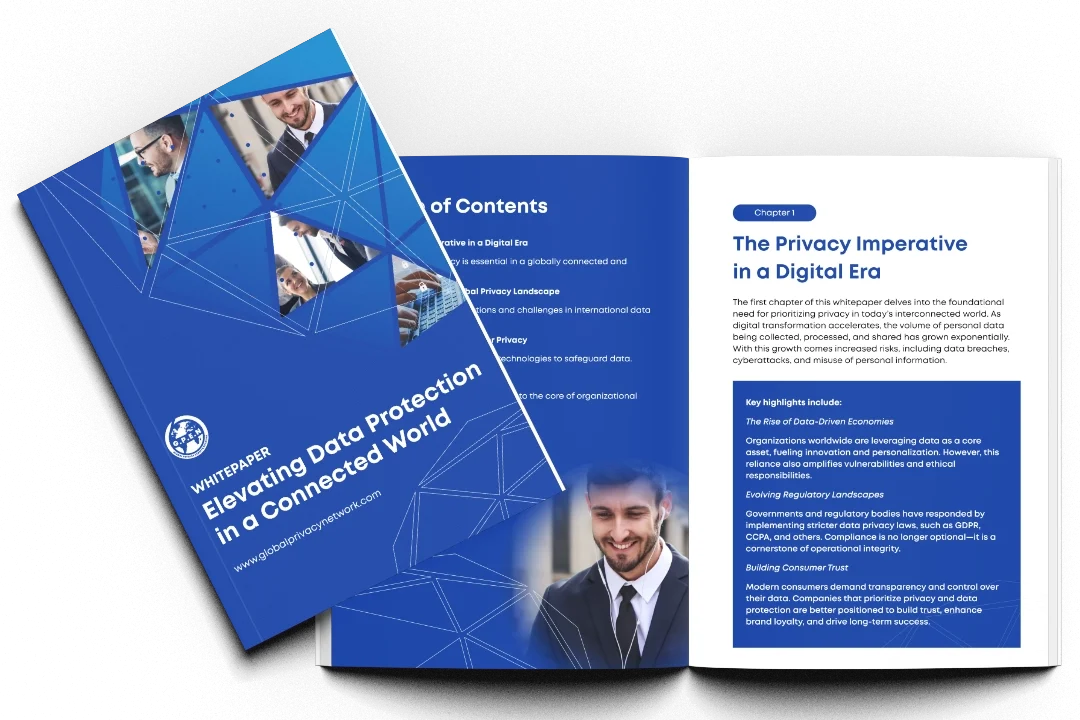Data Encryption and Secure Data Storage Under PDPA and PDPL
Data encryption is one of the most effective ways to secure personal information, especially when stored in digital formats or transferred over the internet. Under both PDPA and PDPL, encryption serves as a fundamental best practice to protect data from unauthorized access, ensuring that any sensitive information is unreadable to anyone who lacks the appropriate decryption keys.
Importance of Encryption for Data Protection
Data encryption converts readable data into an unreadable format that can only be accessed or restored to its original state using specific decryption keys. This practice ensures that, even if a hacker gains access to a system or network, they will not be able to use or comprehend the stolen information.
For organizations subject to PDPA and PDPL, encryption plays a crucial role in maintaining compliance. Both laws emphasize the need to implement reasonable safeguards to protect personal data. Without proper encryption, sensitive data may be exposed to unauthorized individuals or entities, putting businesses at risk of breaches and legal consequences.
Best Practices for Implementing Data Encryption
To implement effective data encryption, businesses should consider the following best practices:
- Use Advanced Encryption Algorithms: Choose encryption methods that are difficult to break. The Advanced Encryption Standard (AES) is widely recognized as one of the most secure algorithms for protecting data.
- Encrypt Data at Rest and in Transit: Ensure that personal data is encrypted both when it is stored on servers (data at rest) and when it is transmitted over networks (data in transit). This two-layered approach prevents data exposure during any phase of the data lifecycle.
- Manage Encryption Keys Securely: Protect encryption keys with secure management processes, ensuring they are kept safe and access is restricted to authorized personnel only.
By incorporating strong encryption practices into their data security strategies, businesses can minimize the risk of data breaches and comply with PDPA and PDPL requirements for protecting sensitive personal data.
Access Control and Role-Based Security Measures for PDPA and PDPL Compliance
Access control is a vital aspect of any data security strategy. Restricting access to sensitive personal data ensures that only authorized individuals can view or process such information. PDPA and PDPL both emphasize the need for businesses to implement access control measures to protect personal data and reduce the likelihood of breaches.
Establishing Role-Based Access Control (RBAC)
Role-based access control (RBAC) is a security mechanism that limits access to data based on the roles of individuals within an organization. With RBAC, businesses can ensure that employees, contractors, and other stakeholders only have access to the information necessary for them to perform their duties. This approach reduces the risk of unauthorized access and ensures that only those who require access to sensitive data can retrieve or manage it.
For PDPA and PDPL compliance, organizations should clearly define roles within their company and assign access levels based on the principle of least privilege. This principle ensures that individuals have access only to the data required for their specific role, minimizing exposure and reducing the risk of internal threats.
Implementing Multi-Factor Authentication (MFA)
Multi-factor authentication (MFA) is another powerful tool for enhancing access control. By requiring users to verify their identity through multiple forms of authentication (e.g., password, fingerprint, SMS code), MFA provides an additional layer of security. This practice is particularly important for systems that handle sensitive data and must comply with PDPA and PDPL regulations.
To implement MFA effectively:
- Use Strong Authentication Methods: Ensure that authentication factors are robust, such as biometric identification or hardware tokens.
- Educate Employees on MFA: Provide training to employees on the importance of MFA and how to use it properly to secure their accounts.
- Monitor Access Logs Regularly: Regularly audit access logs to detect any suspicious activity or unauthorized attempts to access sensitive data.
By integrating RBAC and MFA, organizations can significantly reduce the risk of unauthorized access and improve compliance with data protection laws.
Regular Data Audits and Incident Response for Data Security
Regular data audits and a well-defined incident response plan are essential components of an organization’s overall data security strategy. These practices help businesses stay on top of potential vulnerabilities, identify weaknesses in their data protection systems, and ensure that any security incidents are swiftly addressed.
Importance of Regular Data Audits Under PDPA and PDPL
Data audits help businesses assess the effectiveness of their data security practices and ensure compliance with PDPA and PDPL requirements. By regularly auditing data storage, access, and usage practices, organizations can identify any lapses in security, ensure that data is handled in accordance with the law, and take corrective actions before breaches occur.
During a data audit, businesses should evaluate:
- Data Handling Practices: Ensure that data is collected, stored, and processed in compliance with legal requirements.
- Data Retention Policies: Review data retention schedules to ensure that personal data is not kept longer than necessary.
- Data Minimization Practices: Assess whether only the necessary data is being collected and stored.
Crafting an Effective Incident Response Plan
An effective incident response plan ensures that, in the event of a data breach, businesses can quickly contain the damage and notify relevant authorities and affected individuals in a timely manner. Under both PDPA and PDPL, organizations are required to report breaches to authorities within a specific timeframe, which emphasizes the need for having a pre-established response plan.
Key elements of an incident response plan include:
- Immediate Detection: Set up systems to detect and alert on security breaches as soon as they happen.
- Containment Procedures: Develop protocols to isolate and limit the damage from a data breach.
- Communication Plans: Prepare templates and processes for informing affected individuals and regulatory bodies as required by PDPA and PDPL.
- Post-Incident Review: Conduct a thorough analysis of the breach to identify the cause and implement measures to prevent future incidents.
By regularly conducting data audits and maintaining a robust incident response plan, businesses can ensure they are prepared to protect personal data and comply with the regulatory requirements of PDPA and PDPL.


